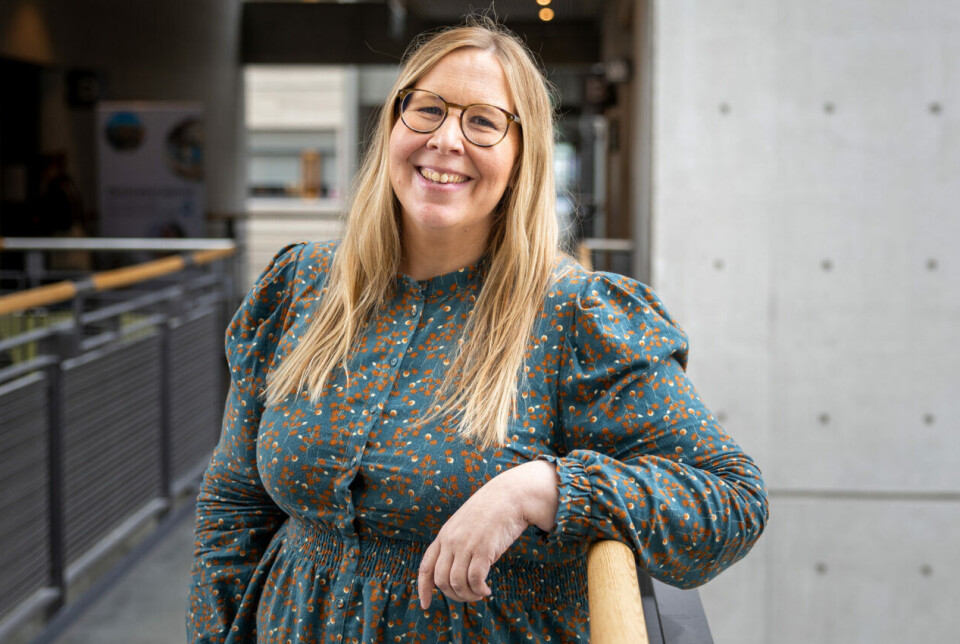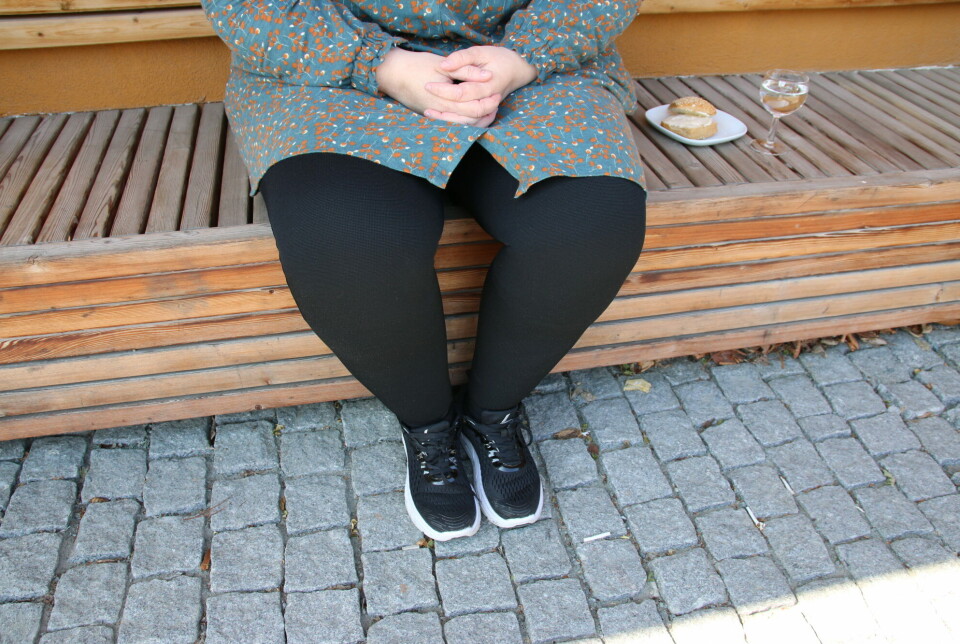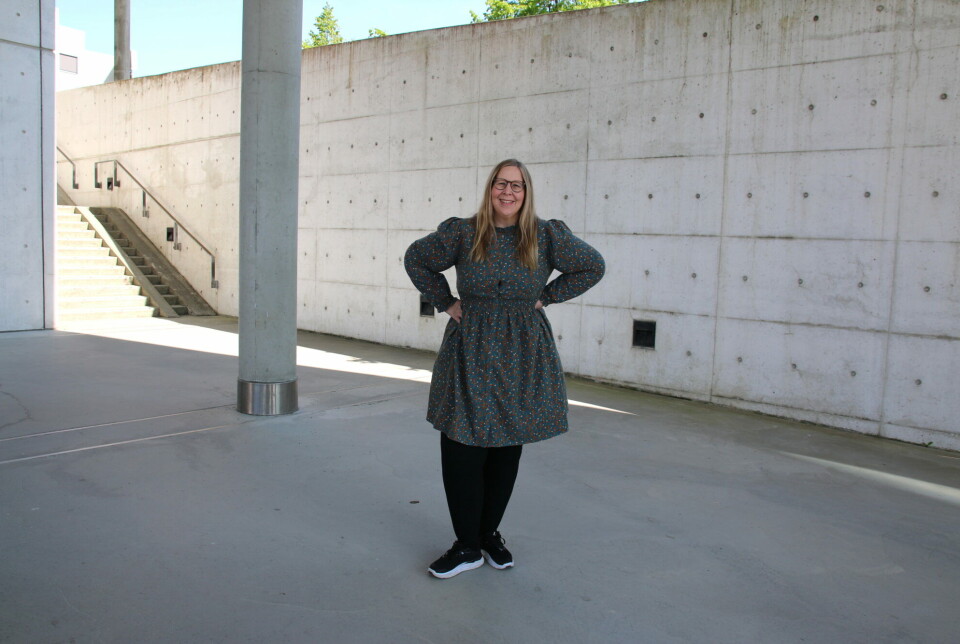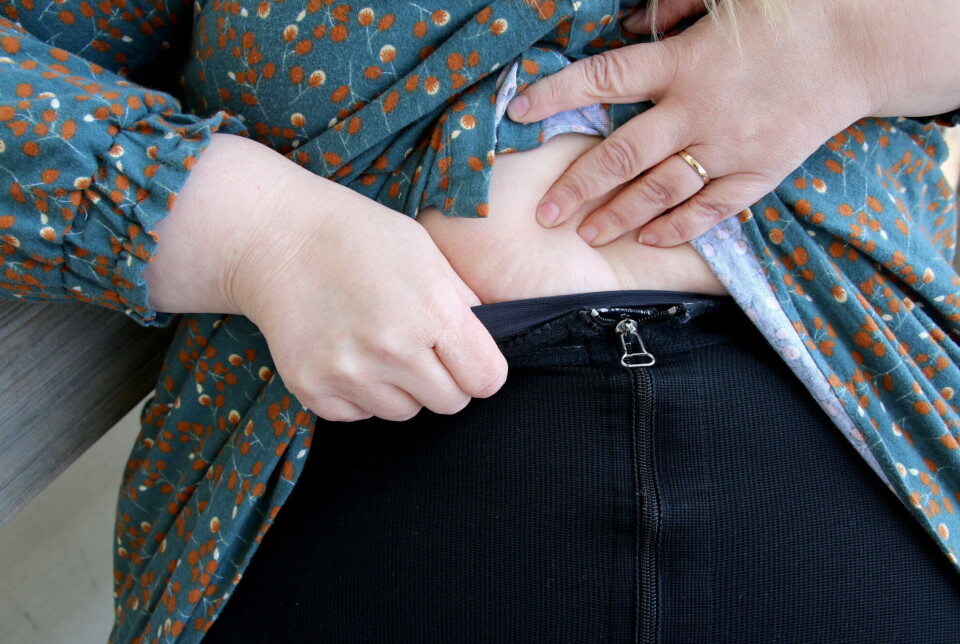THIS CONTENT IS BROUGHT TO YOU BY NTNU Norwegian University of Science and Technology - read more
Lipoedema: Sunniva had tried every diet – but with little success
Recent research shows that the painful, difficult-to-lose fat hurts less when patients are on a low-carb diet.

It all started when she was in lower secondary school.
Her thighs, calves, and upper arms suddenly began to grow, and she could not understand why it was so painful. It was not until she was over 40 years old that Sunniva Kwapeng was diagnosed with lipoedema.
But before the correct diagnosis was made, she tried all sorts of diets – with little success.
It is unlikely that the body fat associated with lipoedema can be lost through dieting.

Limited knowledge
“Despite this being a disease that affects many women, little is known about it, which is rather thought-provoking,” says researcher Julianne Lundanes.
She recently submitted her doctoral thesis at NTNU on the relationship between two different diets and their effects on pain, quality of life, body weight and composition, appetite, and inflammation.
Lipoedema is a poorly understood disease that primarily affects women.
The disease is characterised by disproportionate and excess fatty tissue on the thighs and calves, and sometimes on the arms, while the hands and feet remain unaffected.

Some people also become obese
Lipoedema is painful. It can hurt to move, and it's easy to end up in a vicious cycle of inactivity and reduced quality of life. Lipoedema is often mistaken for obesity, but these are two distinct conditions.
If a person with lipoedema loses weight, it is common to see normal fat, for example on the stomach, disappear, while the calves and thighs remain the same size.
When a person is obese, fat can be stored all over the body, both under the skin and around internal organs. In lipoedema, however, the accumulation of fatty tissue occurs mainly under the skin on the hips, thighs, calves, and arms.
The pain can have a significant impact on quality of life and make it difficult to move.
“We don’t know why the disease is so painful. We believe it involves an inflammatory condition in the fat, and that this is what causes the pain,” says Lundanes.

Lipoedema is often hereditary
There are currently no national guidelines in Norway for the treatment or follow-up of women with lipoedema.
“We also don’t know much about why some women develop lipoedema, except that it appears to be hereditary. It's often the case that several people in the same family are affected by it. The disease often manifests during hormonal changes such as puberty, pregnancy, and menopause,” says Lundanes.
The aim of Lundanes’ study was to determine whether a low-carbohydrate diet could function as a treatment option for patients with the disease.
70 women with lipoedema aged 19–73 were therefore divided into two groups.
One group followed a low-carb diet, while the other followed a low-fat diet. Both groups ate the same number of calories each day, but the amount of carbohydrates and fat varied.
The participants received weekly follow-ups for eight weeks and were tested at the start and end of the study. Pain and quality of life were measured through a questionnaire.
The results showed clear differences between the two groups.
Similar degrees of inflammation
“The women in the low-carb group had less pain. The participants in the other group did not experience any change in pain, but both groups reported better quality of life,” says Lundanes.
Tests were also carried out to see if the reduction in pain was due to the low-carb diet leading to less inflammation in the body. This turned out not to be the case.
“There was no difference in changes in inflammation between the two groups. We also measured inflammation through blood tests, so inflammation in the fatty tissue itself still needs to be investigated in order to draw any conclusions,” says Lundanes.

Greater weight loss on the low-carb diet
The women who followed the low-carb diet lost more weight than those who followed the low-fat diet.
“At the end of the study, we found that the women who ate fewer carbohydrates were less hungry than the other group. The feeling of being less hungry is a well-known benefit of low-carb diets once ketosis is achieved. This may have helped these women lose more weight than the other group,” says Lundanes.
There is no treatment that can remove the causes and cure lipoedema. There’s only treatment that can alleviate some of the symptoms.
Liposuction is one option, but it is currently only offered as part of a research study at Haraldsplass Hospital in Bergen. The only other alternative is to pay for private surgery, which can cost many hundreds of thousands Norwegian kroner.
“The long-term effects of lipoedema liposuction have still not been fully investigated. There's a lack of research in this area too,” says Lundanes.

Compression reduces pain
The most common help available today is physiotherapy and compression garments that squeeze and support the fatty tissue.
“Compression garments give many people relief,” says Lundanes.
For Kwapeng, compression garments have been a great help in managing the pain.
“I’ve also lost many centimetres on my legs because of the compression garments. My expenses for compression are covered, but in other parts of the country, they’re not. It’s completely random what kind of help you get,” says Kwapeng.
At home, she has a machine called a pulsator. It provides a vacuum treatment of the lymphatic vessels, designed to activate the lymphatic system. Lymphatic drainage initiates several cleansing processes in the body and can help improve blood circulation.
The machine is like a giant pair of pants used while lying down.
“It works really well for me. It takes away the pain. I also get more energy. If I have low energy and lie down in it, it’s like my body wakes up,” says Kwapeng.
She did not participate in the NTNU study, and has tried a low-carb diet before. However, she has concluded that a regular Norwegian diet works best for her.
Over time, she has learned to live with the disease, even though it is frustrating to have a condition that is so poorly understood:
“A doctor once told me that at least I won’t die from having lipoedema, but I die a little every time I can’t sit on the floor with my daughter. I die a little every time I can’t go on a hike I want to take because of the pain. And I die a little every time people think I’m just fat and lazy,” says Kwapeng.
Reference:
Lundanes et al. Dietary management of lipedema – Comparing the effect of a low-energy, low-carbohydrate diet versus an isocaloric low-fat diet on pain, quality of life, body weight and composition, inflammation, and appetite, NTNU Open, 2025.
———
Read the Norwegian version of this article on forskning.no
More content from NTNU:
-
Forever chemicals affect ducklings' genes while they are still in the egg
-
Why are pregnant women in Norway so worried?
-
Politics on Facebook: Populist parties choose divisive issues on purpose
-
Social media is connected to cyberbullying – but not how we thought
-
Forskere ved NTNU får nesten 24 millioner av EU for å lage nye strømomformere
-
This helps the youngest children enjoy school more





































